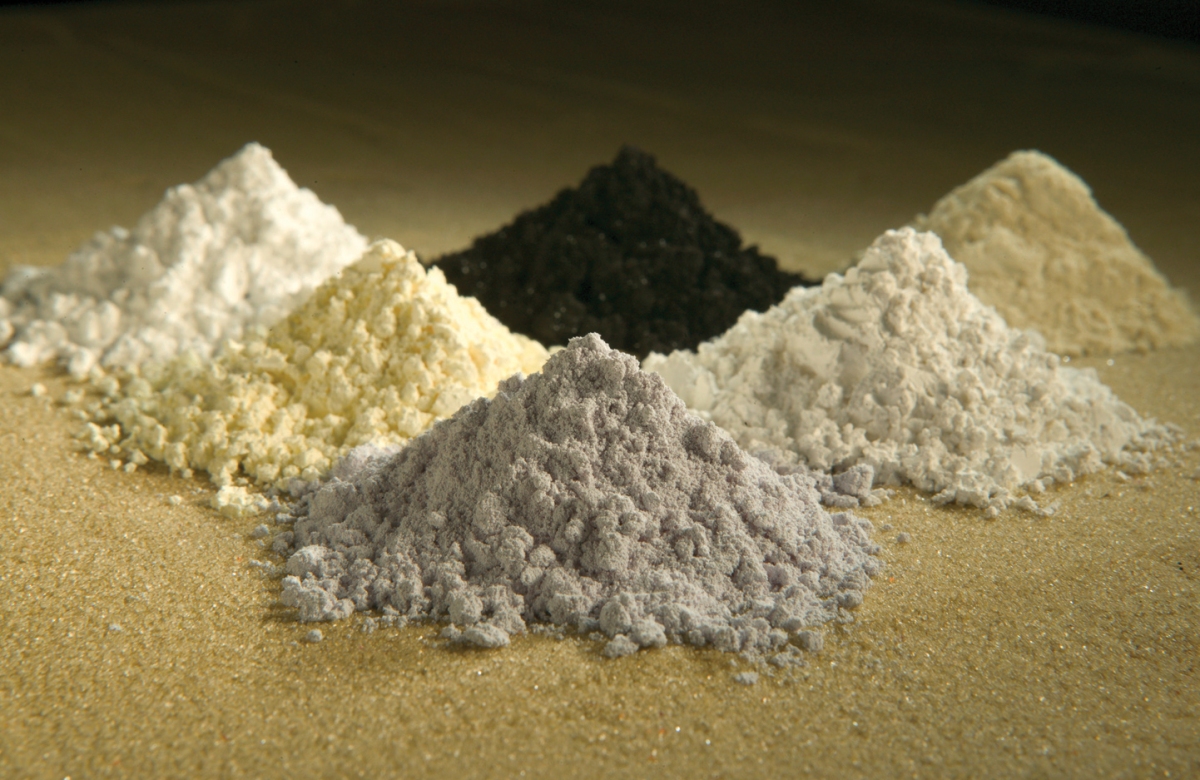Used to produce high-strength permanent magnets, now ubiquitous in mobile phones and laptops as well as energy-efficient electric motors and generators in EVs, wind turbines, appliances and hundreds of other applications.
Used to produce functional and decorative ceramics, structural ceramics, cutting tools, dental crowns, electrical capacitors, tiles and more.
Rare earth elements are used to produce anode materials for nickel-metal hydride batteries used in hybrid electric vehicles and consumer electronics like cordless power tools and shavers.
Used for energy efficient lamps, display screens and avionics, ceramics for jet engine coatings.
Used to polish optical glass, hard disk drives, LCD display screens and gemstones. Also used for UV-filtering glass coatings and high-quality optical glass for camera lenses, microscopes and telescopes and for phosphors in display screens and avionics.
Used in some types of steel and ductile iron making as well as in a variety of different alloys. Used in catalytic converters in gasoline and diesel-powered vehicles, fuel cracking and other oil refinery processes and in the aerospace, agriculture, high-tech and chemical industries.


Niobium
Nuclear Industry
Jet & Rocket Engines
Gas Pipelines
Lanthanum
Lanthanum’s primary end-uses include automotive and imaging/vision applications. Lanthanum prevents corrosion in EV batteries, adds efficiency to petroleum cracking and enables specialized treatments for lenses and vision systems.
Rechargeable Batteries
Night Vision Goggles
Camera & Telescopic Lenses
Cerium
In addition to its role in various metal alloys and glass polishing compounds, Cerium reduces automobile emissions through its use in catalytic converters and enables energy efficiency by powering LED lighting.
Automotive Catalysts
Glass Polishing
LED Lighting
Praseodymium
Neodymium and Praseodymium power the strongest types of rare earth magnets, which enable the conversion of electrical energy into motion via permanent-magnet motors. These motors power EVs and countless industrial processes.
EV Motors
Mobile Devices
Wind Turbines
Neodymium
Neodymium and Praseodymium power the strongest types of rare earth magnets, which enable the conversion of electrical energy into motion via permanent-magnet motors. These motors power EVs and countless industrial processes.
EV Motors
Mobile Devices
Wind Turbines


EV Batteries (fast charging, longer charges). Wind Turbines (longer life), Solar Panels (ultra-compact, highly-efficient)
10% OF DEMAND
EXPECTED GROWTH

High-strength steel, lighter cars, press-hardened steels are stronger
10% OF DEMAND
EXPECTED GROWTH

Small addition of niobium reduces amount of total structural steel used (20%) in projects – thus, reduced cost
80% OF DEMAND
EXPECTED GROWTH

Click image to enlarge

Click image to enlarge